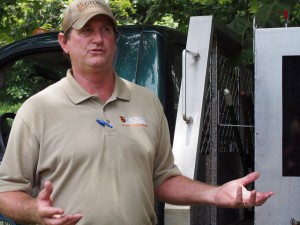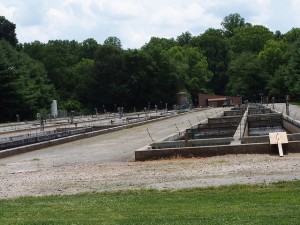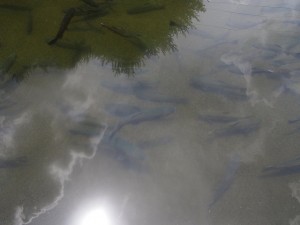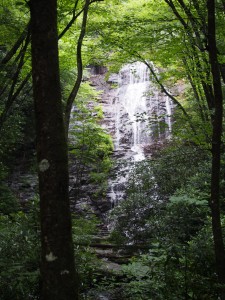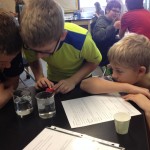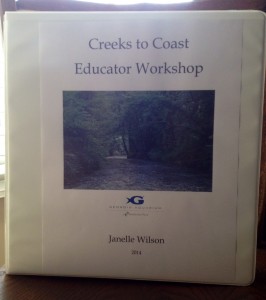It’s been seven weeks since I left on my Creeks to Coast trip with Georgia Aquarium. When the opportunity to be a part of this weeklong experience was presented, I had no idea all of the amazing things I would learn. I also had no idea how the experiences from the trip would permeate throughout the content I teach. I feel like I mention our trip down the Chattahoochee River at least once a day.
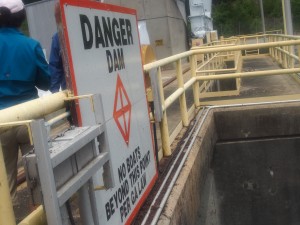 For instance, I am teaching engineering to high school students this year. This week, we are studying the history of engineering – focusing on how civil engineering projects have advanced society as we know it. We looked at things like roads, plumbing and sewer systems, bridges, canals, and dams. While discussing dams, I was able to share my personal experiences from visiting Buford Dam and Bartlett’s Ferry Dam. Since Buford Dam is nearby, I asked students if they knew the primary reason the dam was built. Most of them thought it was for hydroelectric power or to create a reservoir. Thanks to my Creeks to Coast experience and visiting Buford Dam, I was able to share that flood control was the initial reason for green lighting the building of the dam. Of course, hydroelectric power generation and a reservoir are additional uses of the water source.
For instance, I am teaching engineering to high school students this year. This week, we are studying the history of engineering – focusing on how civil engineering projects have advanced society as we know it. We looked at things like roads, plumbing and sewer systems, bridges, canals, and dams. While discussing dams, I was able to share my personal experiences from visiting Buford Dam and Bartlett’s Ferry Dam. Since Buford Dam is nearby, I asked students if they knew the primary reason the dam was built. Most of them thought it was for hydroelectric power or to create a reservoir. Thanks to my Creeks to Coast experience and visiting Buford Dam, I was able to share that flood control was the initial reason for green lighting the building of the dam. Of course, hydroelectric power generation and a reservoir are additional uses of the water source.
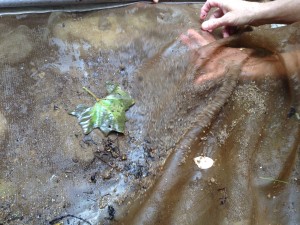 Another exciting experience that I reflect on often is the macroinvertebrate sampling we did at Smithgall Woods. I never thought I would get excited about sifting through collected material to find bugs in order to monitor the quality of a stream! Now, I can’t wait to get started in my area. Just this week, I received by official Georgia-Adopt-a-Stream certification to conducting quality assurance/quality control testing of local streams by monitoring macroinvertabrates.
Another exciting experience that I reflect on often is the macroinvertebrate sampling we did at Smithgall Woods. I never thought I would get excited about sifting through collected material to find bugs in order to monitor the quality of a stream! Now, I can’t wait to get started in my area. Just this week, I received by official Georgia-Adopt-a-Stream certification to conducting quality assurance/quality control testing of local streams by monitoring macroinvertabrates.
Providence Canyon was the highlight of the trip for me. To see such an amazingly beautiful place with the layers of time and sediment right in front of me like a book was so exciting. But even more amazing is how this canyon formed. When the original settlers moved into the area, they tore down the trees and began planting their crops. However, these settlers did not use good  farming practices. Over a relatively short period of time, the rains washed the loose sediment away forming gullies and eventually gorges leading to the canyons that are in the area today. It’s a testament to how humans directly impact the geography of the land around us.
farming practices. Over a relatively short period of time, the rains washed the loose sediment away forming gullies and eventually gorges leading to the canyons that are in the area today. It’s a testament to how humans directly impact the geography of the land around us.
This was such an amazing and exciting trip. I know you’ll keep hearing about it because I can’t stop sharing about all of the wonderful experiences. Before you go, please take a moment to watch this awesome video that overviews the trip. This great video is thanks to Georgia-Pacific who helped sponsor the trip. Enjoy!
